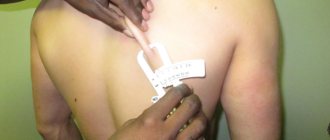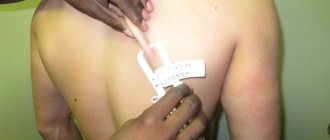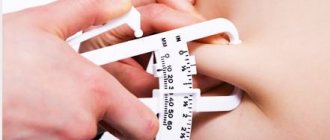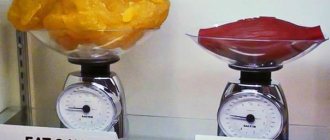Fat is a strategic product , a kind of “stew warehouse” in the body. We got it as a result of thousands of years of evolution, because our ancestors had serious problems with nutrition, and adipose tissue reliably saved us from hunger. It is more difficult to break down than other nutrients, so getting rid of its excess is very difficult.
For example, let’s take a girl weighing 60 kg of normal build. Such a girl has about 15 kg of fatty tissue in her body, that is, 110 thousand kilocalories. Such reserves are enough to survive for 2 months before irreversible consequences begin.
In addition, fats participate in the functioning of the endocrine system, performing a transport function. Extreme values can lead to serious problems with the thyroid gland, menstrual cycle and liver function.
Another important function of fat is thermal insulation. In other words, fat keeps us warm in cold times. This function is mainly performed by subcutaneous fat.
Remember walruses - their fat layer will be the envy of any resident of the Arctic.
There is also visceral fat, which, on the one hand, performs a thermoregulatory function, and on the other, a supporting one. It envelops the internal organs (heart, stomach, intestines, etc.) to keep them in the “right” places and protect them from damage.
With a lack of adipose tissue, problems are observed with thermoregulation and the supporting function of internal organs, with the absorption of fat-soluble vitamins (A, D, E, K), as well as rapid aging of the skin, dry hair and nails. In addition, if there is a lack of fat, survival mode is activated when the body simply will not meet your daily demands. With excess fat, body weight increases, which brings inconvenience, internal organs are literally compressed and cannot function fully, and there are problems with oily skin.
And most importantly: with both a deficiency and an excess of adipose tissue, problems begin with hormones, the functioning of all body systems, cycle disruptions and sudden mood swings.
That is why it is important and necessary to at least visually represent your fat percentage and adjust it if necessary.
Norms and indicators
Before we measure, let's understand what percentage of body fat is normal. And here we need to turn to doctors and biologists.
According to the recommendation of the Committee on Physical Culture and Sports, the normal fat level for women is 21-31%, for men - 14-25%.
As you noticed, the normal “fat percentage” for women is about 5% higher, and this is in line with WHO recommendations. This is due to the special female reproductive system and the functioning of the hormonal system.
Image source: www.fizkult-nn.ru
How much fat do we need?
Fat reserves in the body are not only unpleasant folds on the sides and cellulite on the buttocks. This is the energy reserve of the human body and a heat insulator, thanks to which muscles and organs maintain their natural temperature and do not become overcooled. In addition, fat, along with protein, participates in the formation of the hair follicle, ensures the normal functioning of joints, and promotes the production of sex hormones.
Measuring the amount of subcutaneous fat in the body is necessary, first of all, to track the dynamics of weight loss or weight gain. And also to monitor your health, because a lack of adipose tissue, like an excess, can lead to serious problems.
The minimum level of body fat required for survival is 5% of total body weight in men and 10% in women. At 30% in men and 35% in women, there are clear signs of obesity. The optimal fat content is 12-20% for men and 18-25% for women.
How to measure body fat percentage?
There are several ways:
1. “By eye.” Take several images with examples of different percentages of body fat, take a photo in your underwear strictly from the front. And match your photos with the diagram. There is a drawback here - you can give yourself a “discount” and embellish reality (or, conversely, evaluate yourself too harshly).
2. Using body mass index. Calculate your BMI using the formula
BMI = weight in kg/height squared
After this, compare the resulting BMI with the table
Image source: www.fitlabs.ru
3. Using a caliper , this is a special medical device, similar to a caliper, for measuring your body fat percentage. To do this, you need to lightly press the device on the fold of subcutaneous fat in three places (see image)
Image source: www.fitlabs.ru
Next we calculate using the formula:
% fat = (A-B+C) + 4.03653, where:
- A = 41563 x (sum of all folds in mm)
- B = 0.00112 x (sum of all three folds in mm squared)
- C = 0.03662 x age in years.
4. Bioimpedance analysis - this is performed in the clinic using electrodes on the wrists and ankles. A weak current is passed through the body, which measures the electrical resistance of tissues.
5. “Smart scales” - work on the same principle, only without electrodes on the limbs. The accuracy is still less, in addition, the percentage of fluid in the body can affect the calculation (especially if there is edema). However, this is one of the most convenient methods, because it can be used at home.
Finally, we offer several relevant articles on fat burning:
- Life hacks for effective fat burning
- Three secrets to effective weight loss from a sports psychologist
- How to start counting calories
What do different body fat percentages look like for men?
Your workouts involve a sea of numbers: reps, sets, kilometers, heart rate, and kilograms. But if your body fat percentage isn't on this list, it's time to add it.
Body fat percentage is the total amount of fat in your body, the rest is pure mass. And while body mass index (BMI) is an accurate measurement for the average person, if you have muscle, body fat percentage is a better tool for gauging your performance since the goal for most guys is to cut fat.
According to the Council on Exercise, the average body fat percentage for men is between 18 and 24%. A body fat percentage between 15 and 17% puts you in the exercise category, while 6 to 13% puts you in the athlete category. But what is the visual difference between these numbers?
Men with a body fat percentage below 20 tend to have some degree of muscle definition. As this number decreases, muscle expression increases. And that's mostly abs, since men traditionally tend to store most of their fat in the abdominal area.
But the distribution of body fat is also highly dependent on genetics. This means that if you and your friend lose the same amount of fat, he might emphasize two-pack abs while you emphasize his biceps and triceps (hey, it can get worse). Looking at your father and grandfather will give you an idea of your genetic distribution of body fat.
The situation is different with your weight. If two guys weigh 90 kilograms with 10% body fat, the body fat weighs 9 kilograms. And while the numbers are the same, 81 kilograms of muscle mass looks completely different on a guy who is 170 centimeters tall and on a guy who is 180 centimeters tall. The former may appear denser, while the latter will appear slimmer.
You need a certain amount of body fat - 3%, it is stored in vital organs and plays a key role for normal functioning. Therefore, the minimum healthy body fat percentage a man can achieve is around 3%, typically you will see similar numbers in endurance athletes as well as bodybuilders on competition day. If that sounds ridiculously unattainable to you, don't worry—all of our experts agree that 10-15% is the most realistic. But it's up to you. In the following pictures you will see a visual guide for different fat masses in a man's body to understand what 5-8% fat, 9-13% fat, 14-17% fat and 18-20% fat look like. Then you will also learn how to arrive at these numbers.
Male body fat percentage: 18-20%
Other people may notice that you are active and healthy, but you do not have obvious muscle expression. There's probably some hint of abs and arm muscles, but you don't have a six-pack or defined biceps.
Male body fat percentage: 14-17%
You can see the top two abs, but the rest of the abs is probably not as obvious. You can see defined and firm muscles in the rest of the body, but they are not too lean.
Male body fat percentage: 9-13%
You'll boast defined six-pack abs and clearly defined muscles—great preparation. Your abs and arms are highlighted great, but below that it's not so good.
Male body fat percentage: 5-8%
You look pretty much like Michelangelo's statue of David, like a living anatomical map. All muscles and veins are highlighted. You may not have the biggest muscles in the gym, but they are certainly more pronounced than others.
How to achieve a lower body fat percentage?
Despite what you might think, the biggest difference between 7% and 20% isn't your workout—it's your diet, experts all agree on that. The difference comes down to eating right for strength training and eating a balanced diet for looking good.
A guy with a 7 percent body fat ratio is definitely following an extremely strict eating plan. He probably cuts out some macronutrients from his diet, for example, following a Paleo diet without carbs, he definitely pays extremely close attention to what he eats.
Meanwhile, men with 10-12% body fat are in constant flux - some weeks they are at 9%, other times - 12%. Such guys can go off the diet when they meet with friends, and also allow themselves a day of indulgence.
Men with a fat ratio of 15% are not as strict in their diet. They pay attention to their food and even make some decisions - avoid fried foods, eat a hamburger without a bun, don't buy hot dogs from fast food stands. But they do not follow a strict diet.
It's about what your priorities are: do you want to break your diet for a beer with the guys once a week and look pretty good - better than most - or do you want to limit your diet and impress with your looks?
For some men, aesthetics are extremely important, and that's okay. But for others, the balance of wanting to look good and enjoying some of life's pleasures is more desirable.
When you want to reach a new body fat point, you need to decide: how important is it to cut your body fat below 10%? Because it will require some kind of lifelong commitment. With 20% fat, you can enjoy half a pizza. At 15% you will have to limit yourself to 1-2 pieces. And at 8% you will be sniffing the pizza and eating your salad.
What do the stronger sex look like in terms of body fat percentage?
3 to 4% body fat is typical for bodybuilders. They achieve a similar ratio in the period of time before preparing for sports competitions. In this regard, veins on each muscle become noticeable on the body. The minimum norm during this period for men is considered to be 2% fat. This amount is enough for the normal functioning of the body.
From 6 to 7% is typical for representatives of the modeling business among the male population. The data are not so categorical, but very far from the norm in everyday life. Thinness becomes obvious, the face looks sick and tired, which awakens concern for the man’s health in the people around him.
From 10 to 12% - these indicators refer to the norms of fat in a man’s body. The abdominal muscles are not clearly visible, but the abs are clearly visible. This is the body type that most men strive for when they go to the gym. Veins do not stand out on every muscle, but exclusively on the arms and shoulders. According to statistics from young ladies surveyed, this is the type of figure that is most attractive.
From 15 to 19% - such indicators are typical for men with a slim and fit physique. The outlines of the muscles are visible, but there is no clarity. However, this does not negatively affect the shape of the body.
Quite a few men on the planet have between 20 and 24% body fat. With this type of figure, the outlines of the muscles are not very distinct, and in most cases a slight tummy already appears. For example, most of the male population in New York City has exactly these body fat percentage characteristics. As a rule, with a height of 180 cm and a body weight of about 80 kilograms, a man looks quite slender. The content of deposits in this case is no more than 20 percent of body fat. The photo clearly demonstrates this.
The fat content ranges from 25 to 29% in men who have significantly exceeded the norm in the waist area and slightly increased volume in the neck area. In this case, the muscles are virtually invisible. There are small folds of fat visible to the eye. But they are easily hidden under clothes. Abdominal obesity occurs in men with a waist circumference greater than 91 cm.
Potential Complications of Excess Fat
The World Health Organization (WHO) classifies obesity as one of the leading preventable causes of death worldwide.
- Obesity often entails:
- Decreased quality of life
- Deterioration of mental state
- Obstructive sleep apnea
- Cardiovascular diseases
- Some types of cancer
- Type 2 diabetes
All of these potential complications reduce a person's length and quality of life. As such, obesity is a serious medical condition that should be treated under the close supervision of a doctor or nutritionist.
Obesity
From 30 to 34% body fat is visually visible. Such data is characterized by the distribution of fat evenly throughout the body: on the neck, hips, arms, abdomen, back and face. If you look closely, visually the waist size seems much wider than the hip size, and the stomach seems to hang forward.
Between 35 and 39% body fat is achieved when body weight continues to increase. As a result, the percentage of fat in men also increases. The largest amount of fat deposits accumulates in the abdominal area, which begins to sag even more. The waist is no longer visible, as it is covered with fat, and the girth in this place can exceed 101 cm.
From 40% of the body fat content and more, as in the case described above, deposits are concentrated in the abdomen and estimated waist. The waist circumference already exceeds 145 cm. Similar indicators for a man - the percentage of fat and its voluminous shape - force him to face a number of difficulties in his usual life. For example, walking up the steps no longer seems so easy, or getting through the door is very difficult. It is almost impossible to bend over. This signals obesity. You need to consult a specialist or start eating healthy on your own, including physical exercise.
Professional ways to measure body fat percentage
Body fat can be measured using special clinical equipment. Such methods help to find out not only the percentage of body fat, but also the amount of muscle in the human body.
- Bioimpedancemetry is a research method in which a weak electric current is passed through body tissue. This test can measure fat and muscle percentage, basal metabolic rate, water content, bone mass, and visceral (internal) fat.
- Underwater weighing. One of the most difficult measurement methods. To measure fat, regular weighing and underwater weighing are carried out, after which these indicators are compared and the amount of fat is calculated. It is considered one of the more reliable methods for calculating the amount of fat.
- Using the Bod Pod system. This is a special device that measures the air displaced by the body and, based on the data obtained, the volume, density and composition of the body are calculated. Like underwater weighing, it gives very accurate results, but has a high cost.
- X-ray examination helps to measure not only body fat, but also other important indicators: the amount of water and muscle in the body, the presence of internal fat and others.
With the help of professional research methods, you can find out the exact composition of your body. However, the cost of such studies makes them unaffordable for most people.
A little about visceral fat
This type of fat does not accumulate around the waist and hips, but around the abdominal organs. This type of fat surrounds internal organs for protection, shock absorption, and as a source of energy in emergencies. But just like in everything, you need balance.
Excess and lack of visceral fat has a significant negative impact on human health. After all, it is directly linked to high levels of low-density lipoprotein (LDL) cholesterol, low levels of high-density lipoprotein (HDL) cholesterol and insulin resistance.
LDL cholesterol is commonly referred to as “bad” cholesterol, while HDL cholesterol is referred to as “good” cholesterol. High levels of LDL cholesterol can cause plaque to form in the arteries and lead to complications including heart attacks.
Insulin resistance occurs when cells stop responding properly to the hormone insulin, which can lead to high blood sugar levels and ultimately cause the development of type 2 diabetes.











